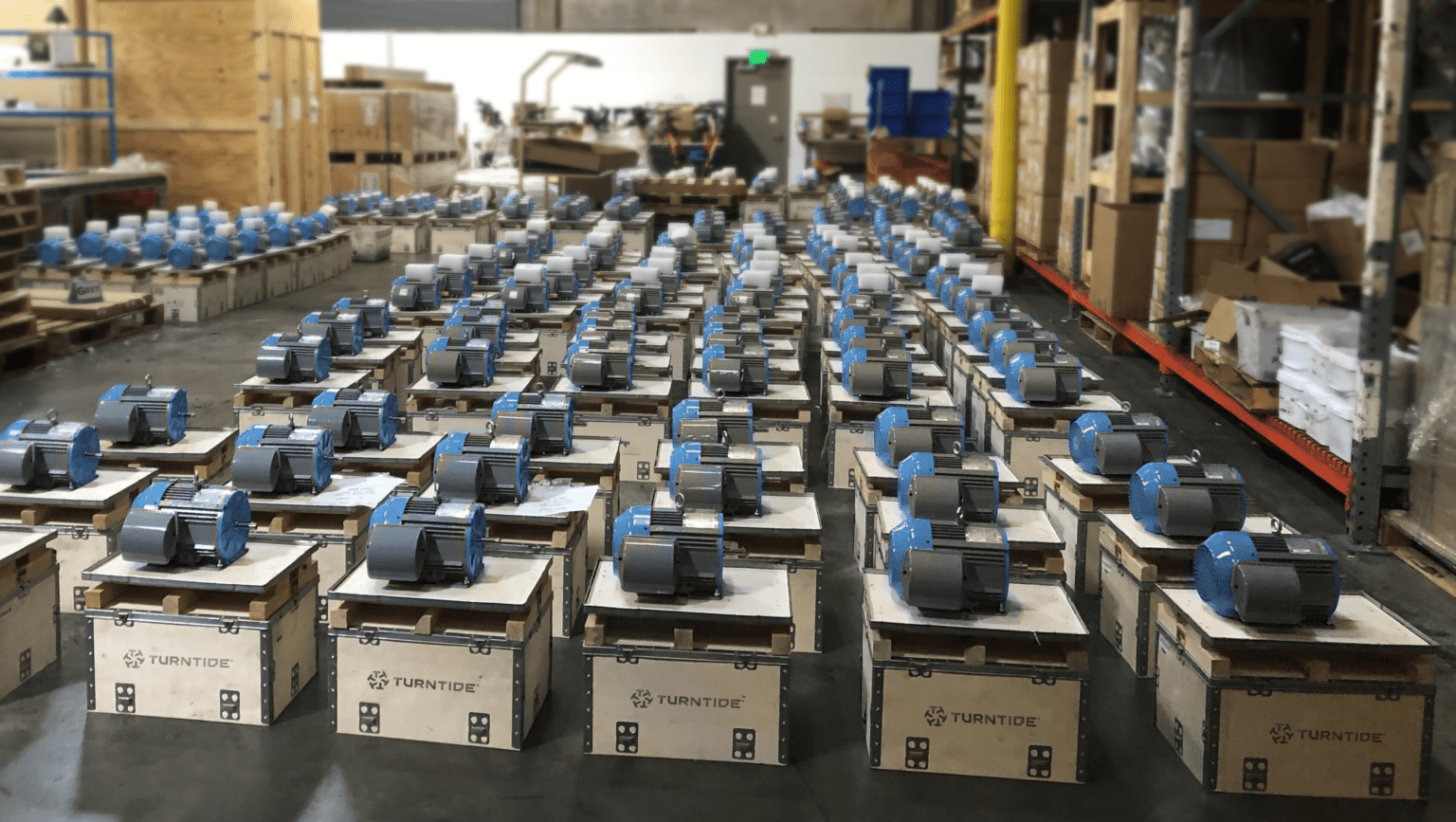Wells Fargo initially invested in early-stage startup Turntide Technologies seven years ago, won over by the company’s business plan to produce energy-saving motors that slash power consumption for heating, ventilation and air-conditioning systems.
Now the bank is a marquee user of Turntide’s technology, which can be used as a drop-in motor replacement in HVAC equipment that isn’t old enough to replace but needs an efficiency upgrade. Turntide’s motors can operate at variable speeds, which enables building managers to automate changes to electricity consumption based on real-time conditions.
“It’s a simple replacement that can drastically reduce energy,” said Robyn Luhning, chief sustainability officer at Wells Fargo. The system is compatible with most existing HVAC equipment, a crucial metric for the bank’s corporate facilities and property group, she said.
Wells Fargo’s field tests of Turntide’s technology — facilitated through the Innovation Incubator program it manages in collaboration with the National Renewable Energy Laboratory — resulted in significant reductions. In a bank branch near Englewood, Colorado, the decrease was 70 percent, which will reduce overall power consumption by an estimated 7,000 kilowatt-hours annually. Power consumption at its Charlotte, North Carolina, office, went down 80 percent, which could save 29,000 kilowatt-hours per year.

The case for a smarter motor
Turntide makes switched reluctance motors, historically used in clocks or phonographs. The motors run at variable speeds, allowing them to be adjusted in response to operating conditions such as changing weather. That in turn enables building managers to automate changes to electricity consumption based on real-time conditions. Turntide’s motors also don’t require the rare earth metals used by magnet-powered systems, making them more sustainable from a materials perspective.
The technology is “simple, reliable and can handle a range of tough operating conditions,” said Rushad Nanavatty, director of Third Derivative, the climate tech startup accelerator founded by RMI and New Energy Nexus.
The challenge is controlling the motors, a problem Turntide has raised more than $485 million to solve through digital means. “As software and digital controls become more sophisticated, these challenges become more tractable,” Nanavatty said. “If Turntide has solved them, the potential market and applications could be really big and really promising; increasing efficiency in everything from EVs and HVAC systems to industry pumps, fans and conveyors.”
Along with Wells Fargo, the Sunnyvale, California-based startup is backed by Amazon Climate Pledge Fund, Breakthrough Energy Partners and Robert Downey Jr.’s Footprint Coalition. Turntide had a valuation of more than $1 billion in June 2022, but that number will be reduced when it announces another fundraise in 2024, a spokeswoman said.
Energy efficiency crucial for climate goals
Energy efficiency doesn’t generate as many headlines as renewable energy, but improvements in these measures need to double between 2022 and 2030 for the world to meet the climate goals set by the Paris Agreement, according to the International Energy Agency. While investments in efficiency have grown since 2020, they aren’t growing fast enough, the agency said.
“Maximizing efficiency gets us there years earlier and for trillions less and vice versa,” said Third Derivative’s Nanavatty. “Not acting ambitiously on efficiency makes global decarbonization way harder.”
Addressing air-conditioning is an “incredibly important” part of the equation, he said, because it accounts for an estimated 20 percent of global electricity consumption. As the planet warms, that usage could triple by 2050. Based on current projections, the world would need 1 more terawatt of new electricity generation by 2050 just to run air-conditioners — almost twice of the total used today in the U.S.
“Air conditioning load is especially problematic because it often drives peak demand — demand that is the most difficult and expensive to serve and is often served by the most polluting power plants,” said Nanavatty.
A straightforward upgrade
Turntide is targeting companies with large real estate portfolios, such as retailers, or companies managing large warehouse networks where climate control is critical, said Marti Ogram, head of strategic accounts. Other customers include department store chain Canadian Tire (at 600 locations) and two big U.S. mall operations, Macerich and Ivanhoe Cambridge.
The number of motors needed for an installation varies widely, depending on the number of systems involved: two to four units for a bank branch or up to 60 for a big warehouse operation. “The key is finding a company that has a commitment and energy efficiency goals,” said Ogram.
While Ogram declined to discuss pricing, Turntide created a calculator to help potential accounts model the payback period for deployment, usually two to three years.
For example, Wells Fargo said it will pick additional locations for the Turntide technology based on the age and condition of existing systems, local utility rates and the availability of utility energy efficiency incentives that could help cover the costs.
